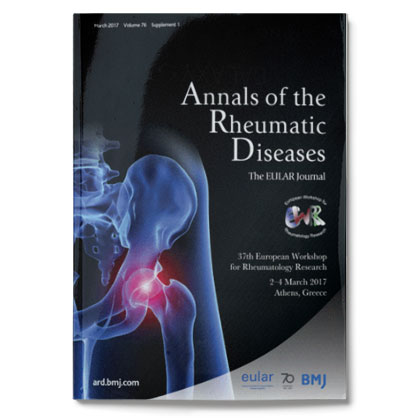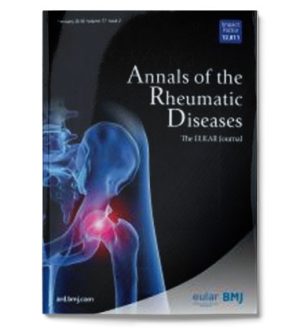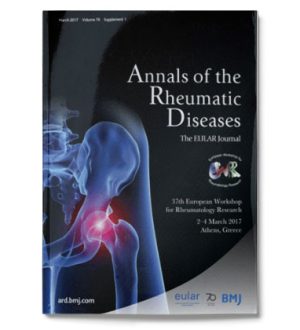Длина теломеры — независимый фактор риска развития сердечно-сосудистых заболеваний у больных подагрой.
 ПРЕДПОСЫЛКИ И ЦЕЛЬ
ПРЕДПОСЫЛКИ И ЦЕЛЬ
Хроническое воспаление ускоряет старение, что сильно повышает вероятность развития сердечно-сосудистых заболеваний. Мы предположили, что воспаление при подагре ускоряет процессы старения и таким образом повышает риск сердечно-сосудистых заболеваний.
МЕТОДЫ
Мы оценили старение на примере процесса репликации, измерив длину теломер (ДТ) в экспериментальной когорте 145 датских больных подагрой и 273 здоровых людей и проверили наши результаты на 474 больных подагрой и 293 здоровых людях из Новой Зеландии. Затем мы изучили влияние сердечно-сосудистых заболеваний на ДТ у всех участников. Мы измеряли ДТ лимфоцитов CD4+ и CD8+T, В-лимфоцитов, моноцитов, NK и плазмоцитоидных дендритных клеток. Кроме того, мы оценили предполагаемую временную разницу между ДТ и активностью теломеразы.
РЕЗУЛЬТАТЫ
ДТ мононуклеарных клеток периферической крови здоровых добровольцев снизилась со временем в соответствии с естественной скоростью старения. У больных подагрой теломеры были короче (p = 0,001, R2 = 0,1 873). По сути, степень разрушения теломер у больных подагрой была выше, чем у здоровых людей, в любой возрастной группе (p<0,0001, R2 = 0,2 847). У больных подагрой с сердечно-сосудистыми заболеваниями были самые короткие теломеры, и ДТ была независимым фактором риска развития сердечно-сосудистых заболеваний у больных подагрой (p = 0,001). ДТ была обратно-пропорциональна количеству подагрических атак (p = 0,005).
ВЫВОДЫ
У больных подагрой теломеры короче, чем у здоровых людей, что говорит об усилении процессов старения клеток. Степень укорочения теломер была связана с частотой подагрических атак и сердечно-сосудистых заболеваний.
Vazirpanah N1,2, Kienhorst LB3, Van Lochem E4, Wichers C1,2, Rossato M1,2, Shiels PG5, Dalbeth N6, Stamp LK7, Merriman TR8, Janssen M4, Radstake TR1,2, Broen JC1,2.
Annals of the Rheumatic Diseases (ARD). 2017 Mar 27. pii: annrheumdis-2016−210 538.
DOI: 10.1136/annrheumdis-2016−210 538
![]()
Patients with gout have short telomeres compared with healthy participants: association of telomere length with flare frequency and cardiovascular disease in gout
AIM AND BACKGROUND
Chronic inflammation associates with increased senescence, which is a strong predictor for cardiovascular disease. We hypothesised that inflammation accelerates senescence and thereby enhances the risk of cardiovascular disease in gout.
METHODS
We assessed replicative senescence by quantifying telomere length (TL) in a discovery cohort of 145 Dutch patients with gout and 273 healthy individuals and validated our results in 474 patients with gout and 293 healthy participants from New Zealand. Subsequently, we investigated the effect of cardiovascular disease on TL of all participants. Also, we measured TL of CD4+ and CD8+T lymphocytes, B lymphocytes, monocytes, natural killer cells and plasmacytoid dendritic cells. Additionally, we assessed the potential temporal difference in TL and telomerase activity.
RESULTS
TL in PBMCs of healthy donors decreased over time, reflecting normal ageing. Patients with gout demonstrated shorter telomeres (p=0.001, R2=0.1 873). In fact, the extent of telomere erosion in patients with gout was higher at any age compared with healthy counterparts at any age (p<0.0001, R2=0.2 847). Patients with gout with cardiovascular disease had the shortest telomeres and TL was an independent risk factor for cardiovascular disease in patients with gout (p=0.001). TL was inversely associated with the number of gouty flares (p=0.005).
CONCLUSIONS
Patients with gout have shorter telomeres than healthy participants, reflecting increased cellular senescence. Telomere shortening was associated with the number of flares and with cardiovascular disease in people with gout.
Published by the BMJ Publishing Group Limited. For permission to use (where not already granted under a licence) please go to http://www.bmj.com/company/products-services/rights-and-licensing/.
KEYWORDS
Cardiovascular Disease; Gout; Inflammation


